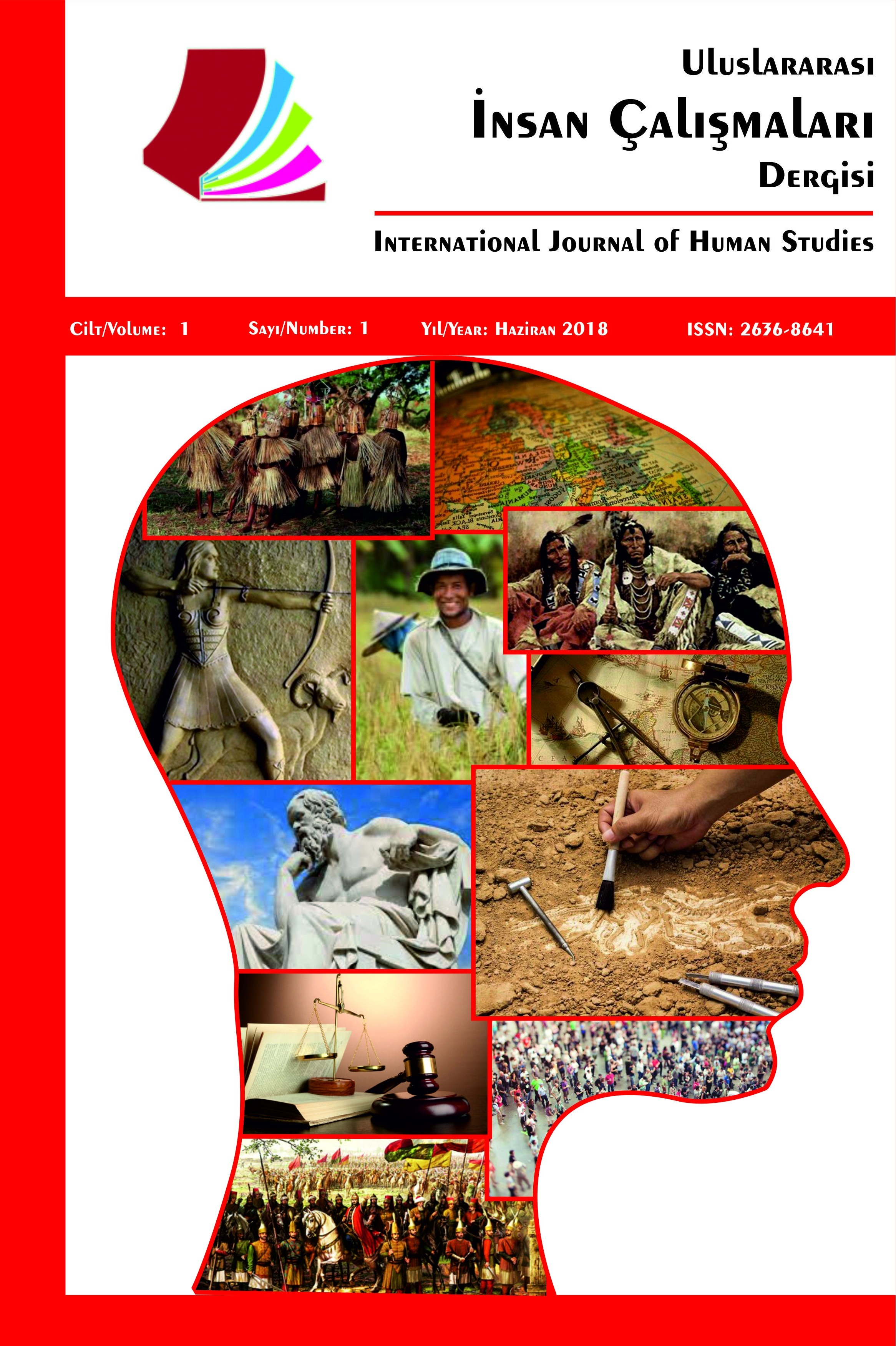Alan Araştırması ve Bilimkurgu Üzerinden İnsan-Teknoloji İlişkisine Bakış: Ankara’da Bir Rezidans ve J.G.Ballard’in “Gökdeleni”
Bu metin, 2017-2018 yılları arasında Ankara’nın Oran semtindeki bir rezidansta gerçekleştirilen alan araştırmasına dayalı gözlemlerle, James Graham Ballard’ın Gökdelen romanı arasındaki benzerlikler ve farklılıklar temelinde teknolojilerin sosyal rollerine dair bir karşılaştırmaya yer vermektedir. Bu çalışma, çeşitli teknolojik araçlarla donatılmış binalarda yaşayanların teknolojilerle kurdukları ilişkileri ve teknolojilere atfettikleri anlamlandırmaları işlemektedir. Bir kurgu romanını bu çalışma bağlamında anlamlı kılan husus, romanda görülen teknolojik araçlara erişim biçimlerindeki farklılıklar ve bu farklılıklara dayalı sınıfsal konumlanmanın rezidans sakinleri arasında da görülmesidir. Bu kapsamda teknolojilerin sosyal rolü; sınıfsal konum, statü, prestij, güç ve iktidar gibi birbirine işaret eden kavramlar, paralel bir şekilde hem bir kurgu eser hem de alan araştırması üzerinden tartışmaya açılacaktır. Sınıfsal konumlanmanın işleyişinde teknolojilerin işlevsel bir rol üstlendiğini göstermeyi amaçlayan bu çalışma, dışarıya karşı bireyin statüsünün ve ekonomik gücünün göstergesi olabilen teknolojilerin, sakinler arasında da kişilere otorite ve ayrıcalık kazandırabilen araçlara dönüşebileceğini ortaya koyabilmeye yöneliktir.
Anahtar Kelimeler:
Rezidans, , James Graham Ballard, , Gökdelen, , insan-teknoloji ilişkisi, , sınıfsal konumlanma
An Overview of the Human-Technology Relationship Over a Field Study and a Science Fiction: a Residence in Ankara And J. G. Ballard’s “High-Rise”
This text focuses on a comparison of the social roles of technologies on the basis of similarities and differences between High-Rise, the novel written by James Graham Ballard and the observations based on the field research that was conducted in a residence in Oran, Ankara between 2017-2018. This study deals with the various relationships and interpretations attributed to technologies by those, who are living in buildings that were equipped with various technological tools. What makes a fictional novel meaningful in the context of this study are that the differences in the way of accessing to the technological tools and the class positioning based on those differences that is found in the novel is also observed among the occupiers in the residence where the field research was completed. Within this scope, the social roles of technologies and concepts that refer to each other such as positioning of social classes, status, prestige, power and potency will be parallelly opened up in a disscussion between a fictional work and a field study. This study aims to show that technologies play a functional role in the operation of the class positioning. Additionally it is intended to demonstrate that the technologies, which can be an indicator of the individual's status and economic power, in turn, can be the tools that help residensts to gain authority and privilege among others.
Keywords:
Residence, , James Graham Ballard, , High-Rise, , human-technology relationship, , positioning of social class,
___
- Atkinson, R. & Flint, J. (2004). Fortress UK? Gated Communities, the Spatial Revolt of the Elites and Time-Space Trajectories of Segregation. Housing Studies, 19(6), 875-892.
- Ballard, J. G. (2015). Gökdelen. (D. Körpe, Çev.) 2. Baskı. İstanbul: Sel Yayıncılık.
- Bauman, Z. (2014). Modernlik ve Müphemlik. (İ. Türkmen, Çev.) 2. Baskı. İstanbul: Ayrıntı Yayınları.
- Bourdieu, P. (2015). Ayrım: Beğeni Yargısının Toplumsal Eleştirisi. (D. Fırat ve G. Berkkurt, Çev.) 1. baskı, Ankara: Heretik Yayınları.
- Davies, J. (2018). Transition, Abstraction and Perverse Concreteness in J. G. Ballard’s High-Rise. Textual Practice, 32(10), 1741-1761.
- Ellul, J. (1964). The Technological Society, (J. Wilkinson, Çev.) New York: Vintage Books.
- Groes, S. (2012). The Texture of Modernity in J. G. Ballard’s Crash, Concrete Island and High-Rise. Jeannette Baxter and Rowland Wymer (Ed.), J. G. Ballard: Visions and Revisions. US: Palgrave Macmillan, 123-142.
- Harvey, D. (1989). The Condition of Postmodernity: An Enquiry into the Origins of Cultural Change. Cambridge MA & Oxford, UK: Blackwell.
- Lynch, K. (1960). The Image of the City. Cambridge, Mass: MIT Press.
- Ritzer, G. (2016). Toplumun McDonaldlaştırılması: Çağdaş Toplum Yaşamının Değişen Karakteri Üzerine Bir İnceleme. (A. Emre Pilgir, Çev.) 4. Baskı. İstanbul: Ayrıntı Yayınları.
- Sennett, R. (1999). Gözün Vicdanı: Kentin Tasarımı ve Toplumsal Yaşam. (S. Sertabiboğlu, C. Kurultay, Çev.) 1. Baskı. İstanbul: Ayrıntı Yayınları.
- Simmell, G. (2015). Modern Kültürde Çatışma. (T. Bora vd., Çev.) 10. Baskı. İstanbul: İletişim Yayınları.
- Swartz, D. (2018). Kültür ve İktidar: Pierre Bourdieu’nün Sosyolojisi. (E. Gen, Çev.) 4. Baskı. İstanbul: İletişim Yayınları.
- Tiles, O. & Oberdiek, H. (2014). Conflicting Visions of Technology, Robert C. Scharff & Val Dusek (Ed.), 2nd ed., The Philosophy of Technology: The Technological Condition: An Anthology, UK: Willey Blackwell, 249-259.
- Ultav, Z. T. (2006). Reading Science Fiction Novels As An Architectural Research Method: The Case Study of J. G. Ballard’s High-Rise. Design Research Society, 1-10.
- Waelbers, K., (2011), “Doing Good with Technologies: Taking Responsibility fort he Social Role of Emerging Technologies”, Philosopy of Engineering and Technology 4, New York, Springer.
- Winner, L. (1986). The Whale and the Reactor: A Search for Limits in an Age of High Technology. Chicago: The University of Chicigo Press.
- Başlangıç: 2018
- Yayıncı: Zeynel KARACAGİL
Sayıdaki Diğer Makaleler
Cervantes’in Don Kişot’unda ve Yaşar Kemal’in Dağın Öte Yüzü adlı Üçlemesinde Hayalgücünün Rolü
Sağlık Personeli Adaylarının Psikolojik Yardım Almaya İlişkin Tutumlarının İncelenmesi
Ebeveynlerin Cinsiyet Kalıp Yargılarının Oyuncak Seçimine Etkisi
Elif TABAK, Güzin Yasemin TUNÇAY
“Kumalık” Olgusunun İlk Eş ve Kuma Üzerinden Yankısı
